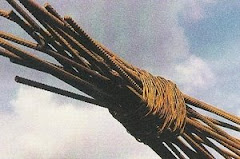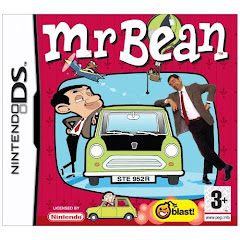FMPA1
Learning Agreement
Concept: Blood of the Shining Stars
My main drive to work on this concept is that I have always loved science fiction, and more specifically space exploration and combat, I have so far never seen a game where you feel that you have the ability to exist apart from a spaceship or that you can land on a planet and disembark, I also from an early age had a deep love of military tactics and tactical games such as risk and Warhammer. This developed into a love of RTS games such as Total Annihilation and Starcraft. I love FPS games such as Battlefield II and Aliens vs Predator. Despite playing games like Star wars Rogue Squadron and Lylat Wars I always felt that nothing had been combined in a satisfying way and that the total immersion I sought could not be found. Games like EVE left me wondering why I couldn’t fight using skill and games like Star wars Battlefront lacked depth despite having both the ability to pilot a spaceship and fight on a planet.
I wanted to make something, which is reminiscent of Starship troopers and Aliens 2 where real players guide massive drop-ships laden with their friends down through heavy flack and losing a character is like losing a warrior in a strategy battle or real life in that they don’t respawn. I want the world to have a point and a sense of realism, even if the setting is buried in the realms of cliché. People enjoy theme-park rides because of the element of fear, I want to bring this and the bond you develop with a mortal character in paper based adventure games into a massively multiplayer world controlled by real people with a vested interest in survival.
The concept as outlined in the game treatment is one that cannot, within the timeframe of this year be realised as a fully playable game. To make an MMO takes a full team a number of years, I know this from first hand experience. There are many components to a successful game. These can be divided into two distinct categories, there is the purely mechanical: this includes the game engine, the GUI’s (graphical user interfaces) the graphics themselves, the control methods, the technical support, the player support. The other category is the emotive, this covers the general aesthetic, the reason players connect with the game, it is essentially intangible but is vital to constructing a fully immersive game world that makes a player feel at home and fosters a sense of community which they will want to engage in and contribute to. The games appeal and emotive side is often parcelled up as its Unique Selling Point as it makes sense to highlight its differences with the rest of the competition by describing the feature that most adds to its impact.
The emotive side of the game requires an entirely different set of researching skills than the mechanical side: they are the skills of the artist and the storyteller. The research is one that encompasses mythology, history legends anthropology art history, military history, politics and contemporary contextual awareness, i.e. why is that I as a Caucasian male product of the post-arcade generation am contributing these thoughts and ideas to the design process, and how by my self awareness can I be more relevant and creatively concise. The research develops in a steep curve from the simple bald idea to fleshing out a story, a world, a society a way of life and in the case of my game an entire universe. These are things that are found not just staring into the plasma abyss of instant gratification that is the internet but they come from intense critical study of what motivates you and your generation, your target market, your pitch, how can your creativity be targeted and cynically, efficiently marketed to strike like a dart into the bulls-eye of universal acceptance by your demographic and how it can become the new gauge of measurement, and the new context in which the new generation is immersed.
The mechanical side of the research represents the duality of the game designer and how that for every setting there is a realisation. Ask any good coder can it be done and they will give you a suitable how long is a piece of string answer. However the artist unlike the coder deals with the realities of what they want to achieve, perversely this is the key to why artist and coder relationships are often fraught with difficulties as the artist cannot see the art in the code, they cannot see it as a language of open ended possibility just a tool for realising vision. These contexts define the research experience and in turn learning from the context makes the process more effective and the critical thinking becomes more developed allowing the faster absorption of knowledge. This skill is vital for mastering the myriad technical disciplines that bring together a game. Each technical discipline requires its own research, which often results in a purely mechanical gain e.g. I can now import a mesh from one programme into another and keep all its mapping co-ordinates. Although research by practice is often the best method for gaining better mechanical skill, this applies for traditional drawing skill equally as it does to mastering complex computer art and design programs.
For my BA year I will endeavour to create a marketable proof of concept for my game consisting of an industry standard game design document, which will outline all aspects of my concept. I will produce in game assets that will be accommodated in a filing system capable of being transferred to full production. I will use the said assets to create animations that demonstrate the unique aspects of the game concept
For FMPA 1 I will conduct rigorous mechanical research into which game engines are capable of supporting the scale of the concept, the capabilities of current technologies to meet the design aesthetic moving forward. I will compile a portfolio of imagery to support the construction of futuristic military assets and textures. I will research military command structures with a view of integrating them into a player run world, This research will help me construct the gameplay elements that most suit the artistic vision. I will also undertake to improve my skills in a range of disciplines, these are: conceptual imagery skills, 3d modelling and texturing skills, animation skills.
I will gain a deeper working knowledge of Photoshop, Maya, Silo 2, Lightwave, Zbrush and Soft Image XSI.
These skills will be researched primarily practically by undertaking asset construction as a purely technical exercise and augmented by work experience, which involves regular critique of my work with an emphasis on accuracy of concept and artistic flair.
Contextually I will examine the motivations of MMO players using journals and surveys, I will utilise my own experience as a seasoned game player to hold a mirror up to other gaming cultures and what appeals to them. I will research what makes a good example of the genres most connected with my game including analysis by play, comment and comparison with independent reviews and player comments, this will be recorded in my online-blog. I will utilise my networks within the gaming industry to uncover the most innovative gaming experiences and solutions.
This will be collated in a research portfolio that will provide all the information I would need to start making Blood of the Shining Stars as a full game, the information I would need to make that game a success and the information I need to make a proof of concept for final exhibition.
-----------------------------------------------------
Game Treatment: Blood of the Shining Stars
Blood of the Shining Stars is a unique game idea never before tried. It is a cathartic game that encompasses all elements of action, adventure and combat. It is set it the future long after the death of the Earth through massive cataclysmic war. There are two main factions, each blames the other for the death of Earth and each is equally to blame, the story is not the focus of the game merely a thread of mythology that runs through the game. It is a science fiction game where the players decide the storyline through their actions. They are the controllers of the galaxy, the factions are only the canvas for them to paint their own bloody history, this will be catalogued and compiled by the player support team and will be viewable as video news broadcasts and cinematic cut-scenes available to any subscribing player.
Uniquely this game will seamlessly merge real-time space combat with adrenaline pumping 1st person shooter action and fluid real-time strategy. Each player will have one life and will be placed into the world depending on how much action they want, if they just want to play Halo style brutal first person they will spawn right in the action at the closest point to enemy troops, subscribing players can opt to play the long game and go through a boot camp to train and be put into a squad that will be see action in easier missions or on cleanup assignments.
Players choose to fight in space as part of the Fleet or fight on land as part of the Strike. Like in real life each one of the armed forces will be broken down into further sections, each with different play styles and opportunities.
The game will be run by the most senior players, they will receive promotions for good service and missions achieved.
The idea that cements this into a workable framework is that players can be captured if they surrender. The captured player is not lost but will be employed to mine resources for the other faction and gain them more resources; the more players capture each other the better financed their faction becomes. Players will exist in a physical location in the game universe and can be freed. Freed players revert to their previous usable state.
This will allow high-ranking players to become valuable trading assets exchanged for other player characters in tense standoffs.








No comments:
Post a Comment